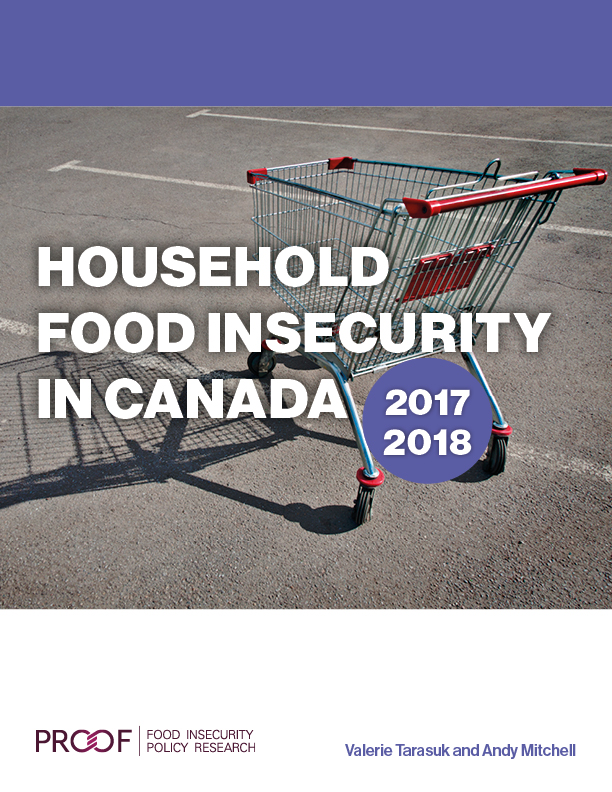Household Food Insecurity in Canada, 2017-2018
March 12, 2020
How to cite this document:
Tarasuk V, Mitchell A. (2020) Household food insecurity in Canada, 2017-18. Toronto: Research to identify policy options to reduce food insecurity (PROOF). Retrieved from https://proof.utoronto.ca/
About Report
Food insecurity – inadequate or uncertain access to food because of financial constraints – is a serious public health problem in Canada, and all indications are that the problem is getting worse.
Drawing on data for 103,500 households from Statistics Canada’s Canadian Community Health Survey conducted in 2017 and 2018, we found that 12.7% of households experienced some level of food insecurity in the previous 12 months. There were 4.4 million people, including more than 1.2 million children under the age of 18, living in food-insecure households in 2017-18. This is higher than any prior national estimate.
In 2015, Statistics Canada implemented a major redesign of the CCHS. This included changes to the method of sampling households for the survey. The changes were implemented to improve the population representativeness of the data from CCHS. However, because of the changes, Statistics Canada cautions users against comparing more recent survey results with those prior to 2015. Consequently, we only present a comparison of prevalence estimates from CCHS 2017-18 and 2015-16. This comparison is limited to provinces and territories that measured food insecurity in 2015-16.

The PROOF status reports are protected under a Creative Commons Attribution-NonCommercial 4.0 International License that allows you to share, copy, distribute, and transmit the work for non-commercial purposes, provided you attribute it appropriately to the original source. Please see Licensing & Attribution for more information.

